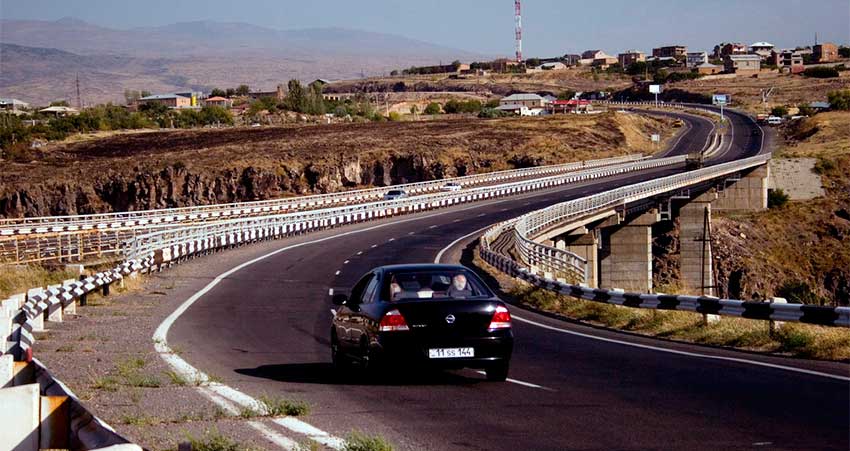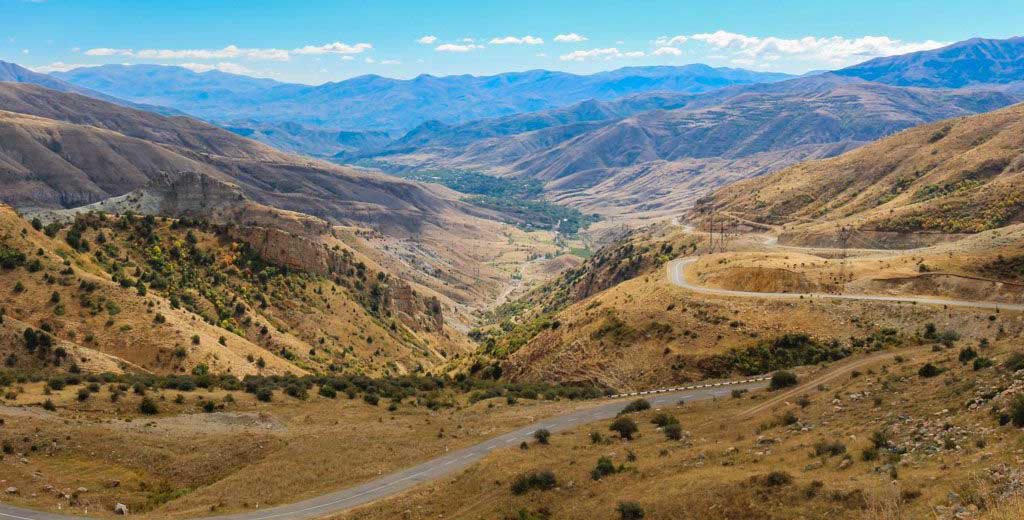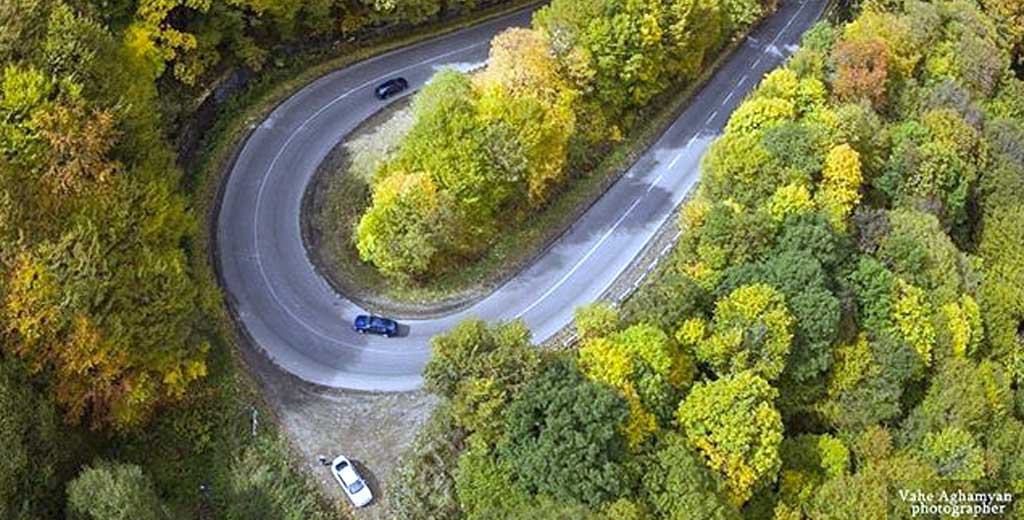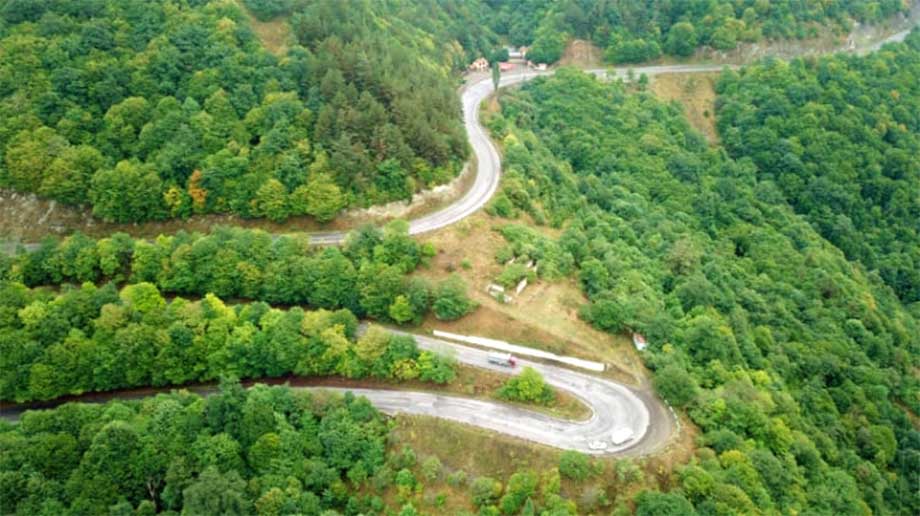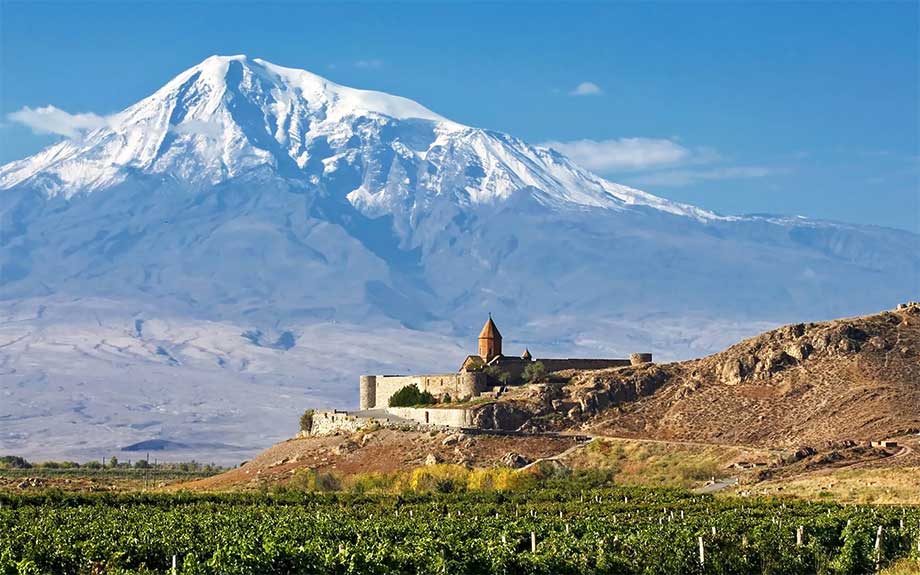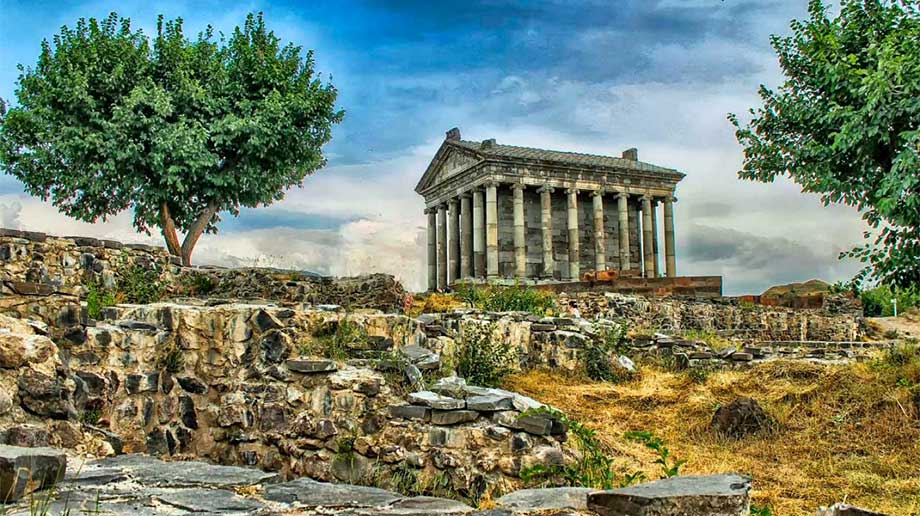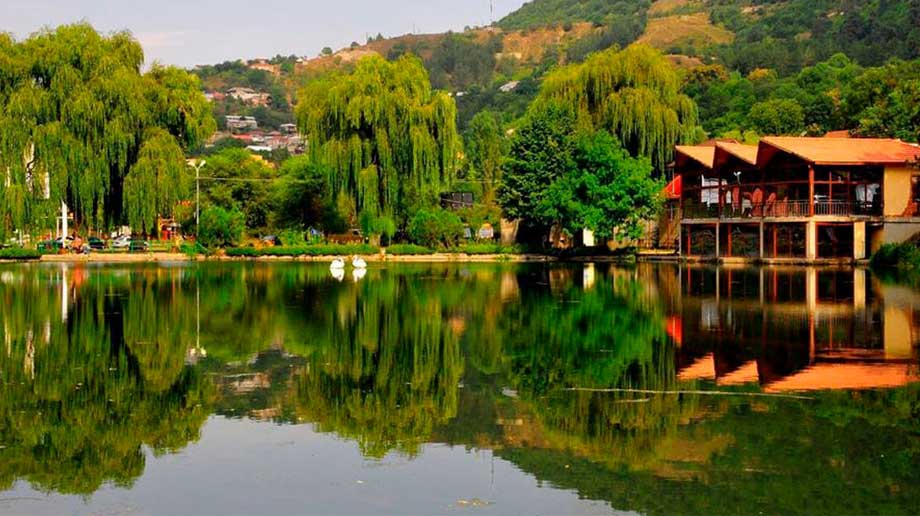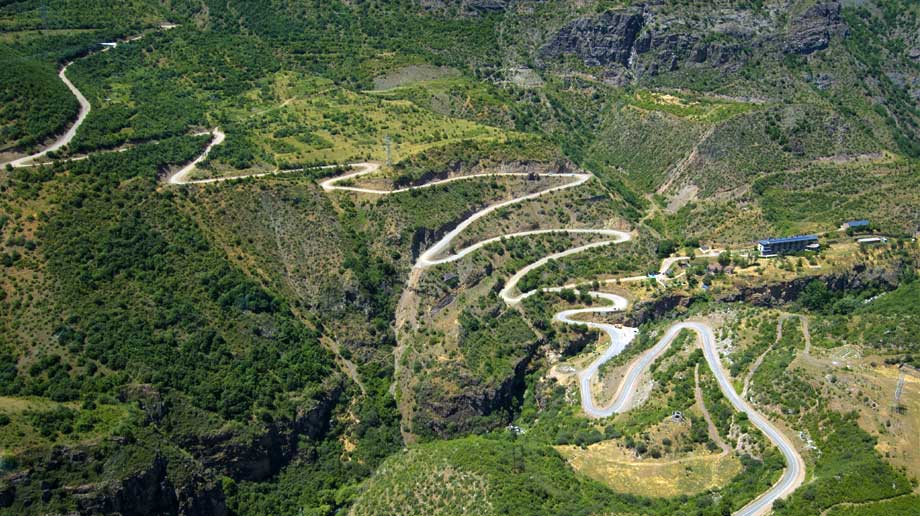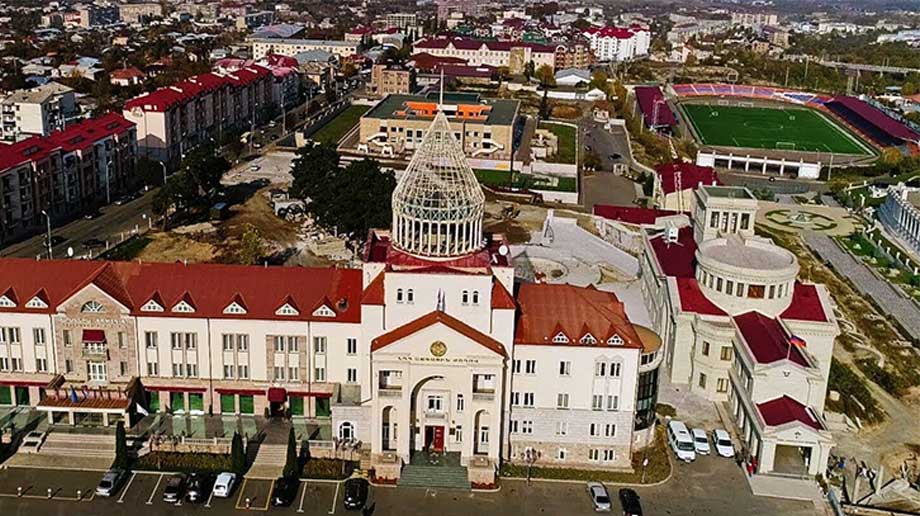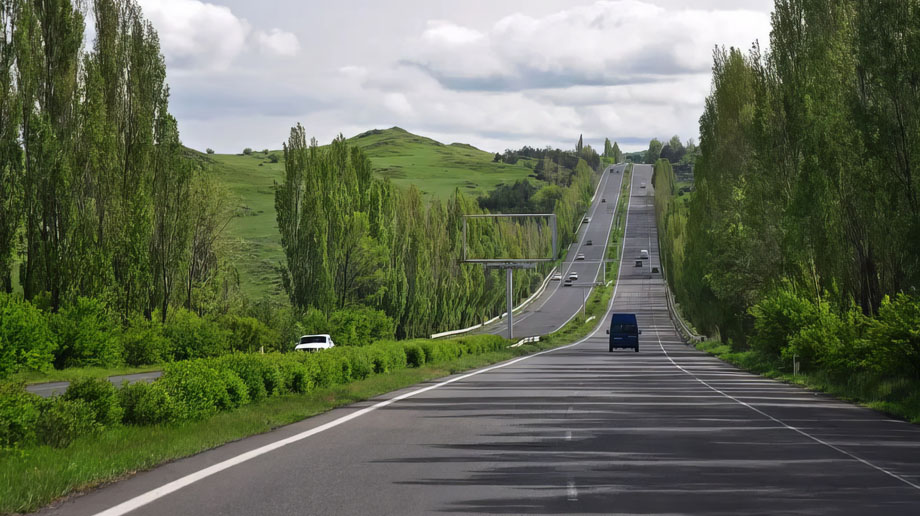
10 most scenic driving routes in Armenia
23-05-2024
Introduction
Armenia, a land of breathtaking scenery and rich history, offers some of the most scenic driving routes in the world. From lush forests and serene lakes to ancient monasteries perched on rocky cliffs, each route reveals the country's natural beauty and cultural heritage. Whether you are a nature lover, a history buff or an adventure seeker, these top 10 scenic routes will take you on an unforgettable journey through Armenia's most stunning and iconic places.
1․ Yerevan - Lake Sevan
Route Description
The trip from Yerevan to Lake Sevan is a scenic journey of about 65 kilometres (40 miles), which will take about an hour and a half. Starting from the bustling capital city of Yerevan, you will head northeast along the M4 highway. Once the cityscapes are left behind, the road gradually climbs into the mountains, offering spectacular views of the picturesque countryside and high mountain ranges. The trail is well-maintained and easy to navigate, making it an ideal day trip for travellers of all ages.
Highlights
- Sevanavank Monastery: Located on a peninsula, Sevanavank Monastery is one of Lake Sevan's most iconic landmarks. Founded in the 9th century, this historic site offers panoramic views of the azure waters of the lake and the surrounding mountains. Ancient stone churches surrounded by cross stones create a serene and thought-provoking atmosphere.
- Lake Sevan: Often called the "Pearl of Armenia", Lake Sevan is one of the largest high-altitude freshwater lakes in the world. Its crystal clear waters and sandy beaches make it a popular destination for swimming, sunbathing and picnics. You can also enjoy water sports such as windsurfing, kayaking and sailing.
- Sevan Writers' House: This traditional retreat for Armenian writers and intellectuals offers a glimpse into the country's rich literary heritage. Located on the shores of Lake Sevan, it provides a tranquil atmosphere for reflection and creativity, with stunning views of the lake.
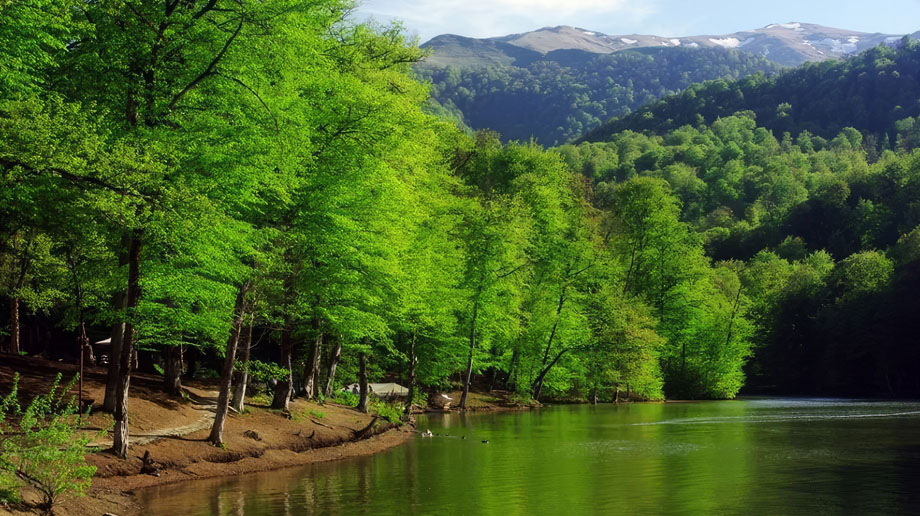
2․ Sevan - Dilijan
Route Description
The drive from Lake Sevan to Dilijan is a scenic route of about 40 kilometers (25 miles), which will take about an hour. Departing from the shores of Lake Sevan, you will head west on highway H29, gradually ascending into the verdant forests and hills of Dilijan National Park. This route is known for its lush greenery, winding roads and breathtaking views that make a stark contrast to the serene waters of Lake Sevan.
Highlights
- Dilijan National Park: As you approach Dilijan, you will enter the dense expanse of Dilijan National Park. This park, known as the "Armenian Switzerland", is characterised by dense forests, clear streams, diverse flora and fauna. It is an ideal place for nature walks, hiking and wildlife watching. The picturesque landscapes of the park allow you to enjoy your vacation in nature.
- Haghartsin Monastery: The Haghartsin Monastery, located deep in the wooded mountains near Dilijan, is a marvellous landmark dating back to the 10th-13th centuries. Surrounded by ancient trees, this mediaeval monastery complex includes three churches and a refectory, characterised by intricate Armenian architecture and stone carvings. Its serene and tranquil setting makes it an ideal place for reflection and exploration.
- Goshavank Monastery: Another important historical site, Goshavank Monastery is located in the village of Gosh. Built in the 12th century, it was an important cultural and educational centre of mediaeval Armenia. The monastery complex includes several churches, a library and the famous Mkhitar Gosh khachkar, a masterpiece of Armenian stone carving.
- Dilijan City: The charming city of Dilijan with its traditional Armenian architecture and quaint streets offers a welcoming atmosphere. Explore the city's historic district, visit local handicraft stores and enjoy the laid-back atmosphere of this picturesque mountain town. Dilijan is also home to UWC Dilijan College, an international boarding school. UWC Dilijan College is an international boarding school that brings a vibrant and multicultural aspect to the city.
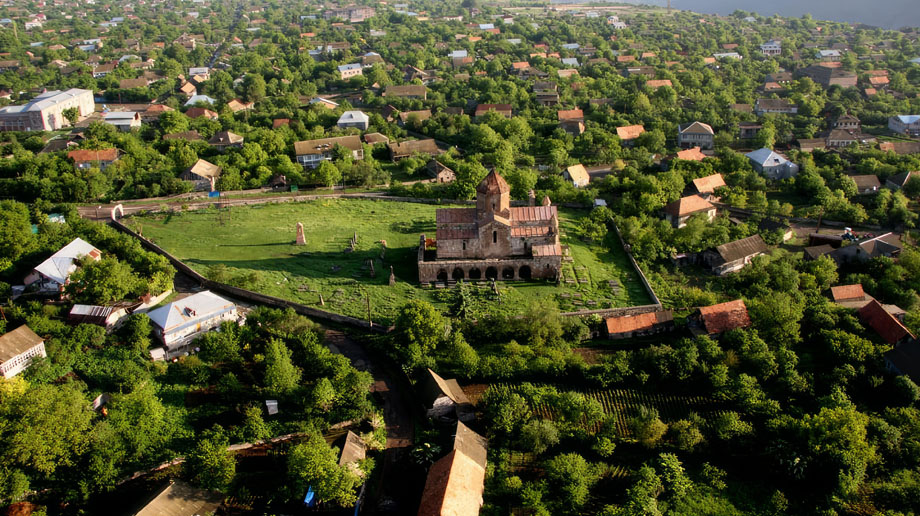
3. Dilijan - Alaverdi
Route Description
The drive from Dilijan to Alaverdi is a scenic and history-rich journey of about 90 kilometres (56 miles) that usually takes about two hours. Starting from the lush forests of Dilijan, you will head north on the M8 highway, looping through the picturesque landscapes of Tavush and Lori provinces. This route is famous for its beautiful mountain scenery, charming villages and significant historical sites.
Highlights
- Haghpat Monastery: One of the first major stops on this route is the UNESCO World Heritage-listed Haghpat Monastery. Dating back to the 10th century, Haghpat is a stunning example of Armenian religious architecture and offers panoramic views of the Debed River Gorge. The complex includes several churches, a bell tower and a refectory decorated with skillful carvings and frescoes.
- Sanahin Monastery: Not far from Akhpat is the Sanahin Monastery, another UNESCO World Heritage Site. Founded in the 10th century, Sanahin is equally significant in terms of architectural and cultural heritage. The monastery complex includes several churches, a library and a scriptorium, showcasing mediaeval Armenian mastery of masonry and religious art.
- Odzun Monastery: Located in the village of Odzun, the monastery dates back to the 5th century and is one of the oldest churches in Armenia. The church is notable for its unique architecture and ancient stone monuments, including an early Christian burial monument with intricate carvings.
- Debed Gorge: A trip through the Debed Gorge is a highlight in itself. The picturesque canyon cliffs, lush vegetation and the meandering Debed River provide a spectacular backdrop for your journey. There are many good viewpoints where you can stop to admire the beauty of nature and take photos.
- Alaverdi City: Driving to Alaverdi, you will reach a city rich in industrial heritage and surrounded by historical sites. The Soviet-era architecture and nearby copper mines form a unique contrast to the ancient monasteries and natural landscapes.
4. Yerevan - Khor Virap and Areni
Route description
The trip from Yerevan to Khor Virap and Areni is a journey of about 110 kilometres (68 miles) through some of Armenia's iconic sites and historical landmarks. The route is mostly along the M2 highway in a southerly direction from Yerevan. The first leg of the drive to Khor Virap takes about an hour, after which you continue southeast to the picturesque wine-growing region of Areni, which is another hour away. The road is well paved and offers panoramic views of the Ararat plain with Mount Ararat rising majestically in the background.
Highlights
- Khor Virap Monastery: The first stop on this scenic route is the famous Khor Virap Monastery, one of Armenia's most significant religious sites. Situated on a hilltop, Khor Virap offers a magnificent view of Mount Ararat, making it an ideal spot for photography. The monastery itself holds a rich history: it was here that St. Gregory the Illuminator was imprisoned for 13 years before converting King Tiridates III to Christianity, making Armenia the first country to adopt Christianity as the state religion in 301 AD. Visitors can descend into the underground chamber where St. Gregory was imprisoned and tour the ancient churches and chapels that make up the monastery complex.
- Areni Wine Region: Continuing your journey, you will arrive in the village of Areni, known for its wine-making traditions dating back more than 6,000 years. Areni is home to several wineries where visitors can tour the vineyards, learn about the winemaking process and taste a variety of locally produced wines, including the famous Areni red. Every year in October, the region hosts the Areni Wine Festival, which celebrates Armenia's viticultural heritage with wine tasting, traditional music and dancing.
- Areni-1 Cave: Not far from the village of Areni is the Areni-1 cave complex, an archaeological monument of great importance. During excavations, the world's oldest winery was discovered, dating back to about 4100 BC. The world's oldest leather shoe and other artefacts have also been discovered in the cave, providing a glimpse into early human civilization. Tours of the cave allow you to learn about these ancient findings and the lives of the people who once inhabited the region.
- Noravank Monastery: A short drive from Areni, in the Amagu Valley, the stunning Noravank Monastery is set against a backdrop of dramatic red cliffs.
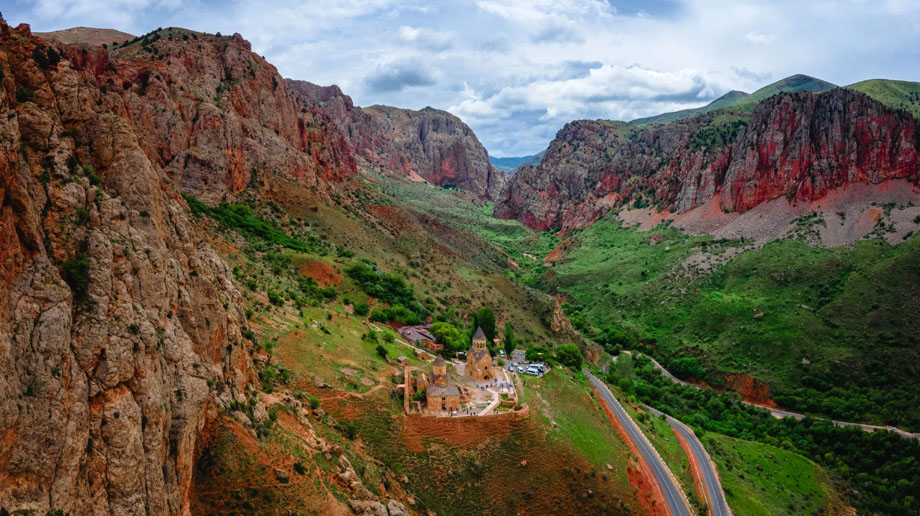
5. Areni - Noravank Monastery
Route Description
The drive from Areni to Noravank Monastery is a short but exciting journey of about 15 kilometres (9 miles). This scenic route takes about 30 minutes and winds through the spectacular Amaghu River Gorge. Leaving Areni, you'll take the H10 road south, where towering red cliffs and lush vegetation await. The well paved road is easy to navigate, making it enjoyable for travellers of all ages.
Highlights
- Breathtaking scenery: The road itself is the main attraction, offering stunning views of the rugged landscape. In the narrow gorge cut by the Amagu River, you can see striking red rock formations that provide a striking contrast to the blue sky and green foliage. Along the way, you can see various birds and wildlife that inhabit the area.
- Noravank Monastery: Located at the beginning of the gorge, Noravank Monastery is a masterpiece of Armenian mediaeval architecture. Founded in the 13th century, the monastery complex includes several churches and chapels, each decorated with intricate carvings and ornate stonework. The Church of Surb Astvatsatsin (Holy Mother of God) is particularly notable for its two-story structure with a narrow stone staircase that visitors can climb up to admire the panoramic view of the surrounding canyon.
- History and Architecture: Noravank is not only a place of spiritual significance, but also a treasure trove of Armenian architectural excellence. The complex was a major religious and cultural centre in mediaeval Armenia and played a decisive role in the country's ecclesiastical history. The detailed bas-reliefs and carvings, including depictions of Jesus Christ and other saints, testify to the skillful craftsmanship of the era.
- Peaceful ambience: Noravank's serene setting encourages visitors to relax. Surrounded by imposing red rocks and natural rhythms, it is an ideal place for reflection and relaxation. The seclusion and natural beauty of the monastery make it an ideal place to take a break from the hustle and bustle of everyday life.
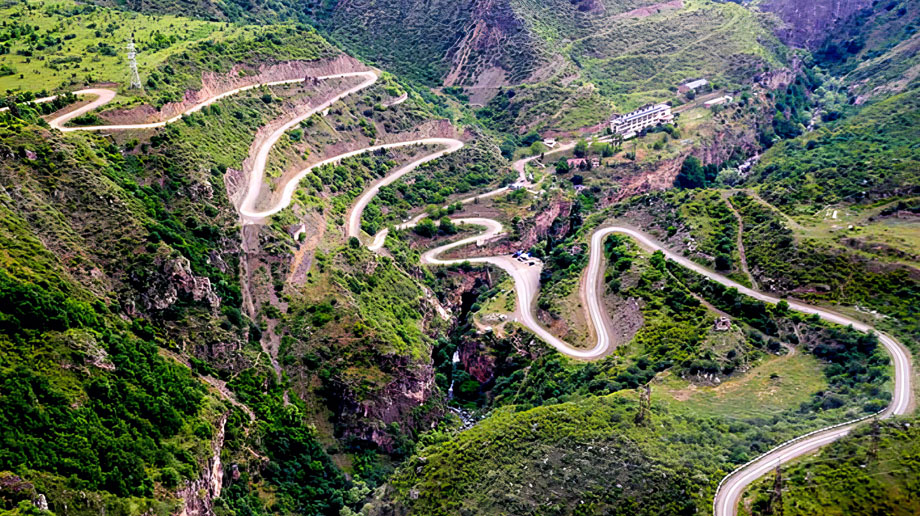
6. Yerevan - Tatev
Route Description
The trip from Yerevan to Tatev is a journey through some of Armenia's most scenic and historically significant landscapes, covering about 250 kilometres (155 miles). This trip usually takes 4 to 5 hours without stops. Starting from Yerevan, you'll head south on the M2 highway, passing through the fertile Ararat plain, the Areni wine region and the mountainous areas of Syunik province. The highway is mostly well-maintained, although it does encounter some winding and narrow roads as you approach Tatev.
Highlights
- Views of Mount Ararat: Driving out of Yerevan, enjoy stunning views of Mount Ararat, Armenia's national symbol, which rises majestically above the horizon. The above-mentioned Khor Virap Monastery, Areni Wine Region, Noravank Monastery are also located on this route.
- Vorotan Mountain Pass: Passing through Vorotan Pass, you will be treated to breathtaking mountain views and magnificent scenery, making this part of the trip especially scenic. Devil’s Bridge: Devil’s Bridge (Satani Kamurj) is a natural wonder located near Tatev, with stone bridges, mineral pools and naturally occurring caves. It is an ideal place for a short hike and exploration.
- Tatev Wings: Tatev Monastery can also be reached by the Wings of Tatev cable car, the longest reversible cable car in the world. This cable car offers a spectacular ride with stunning views of the Vorotan Gorge, providing a unique and memorable approach to Tatev Monastery.
- Tatev Monastery: The final destination, Tatev Monastery, dates back to the 9th century and is one of Armenia's most significant religious and historical sites. Located on a plateau overlooking the Vorotan Gorge, the monastery complex includes beautiful churches, ancient manuscripts and incredible views.
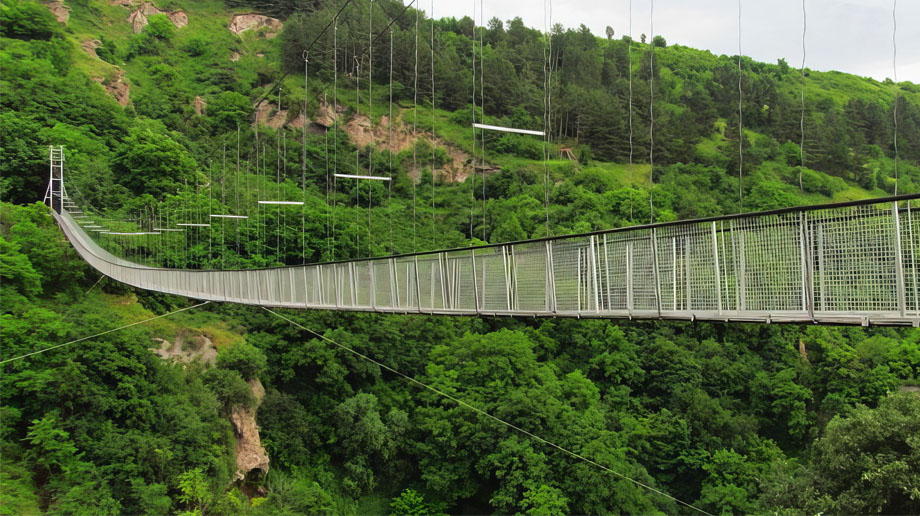
7. Goris - Khndzoresk Cave Village
Route description
The drive from Goris to the cave village of Khndzoresk is a fascinating journey through the rugged landscapes of southern Armenia, taking about 10 kilometres (6 miles) and about 20 minutes. Starting from the charming town of Goris, you will head southeast on the M12 highway, passing through scenic valleys and rocky outcrops before reaching the historic village of Khndzoresk. The road is well paved, but includes some winding sections as you descend into the valley.
Highlights
- Goris Town: Begin your journey in Goris, a town known for its unique architecture and picturesque scenery. Explore the narrow streets lined with traditional stone houses and soak up the relaxed atmosphere of this charming town. Don't miss the Old Town of Goris, where you can admire the intricate carvings on historic buildings and explore the cultural heritage of the region.
- Khndzoresk Cave Village: The highlight of the trip is the Khndzoresk Cave Village, an amazing historical site located in a steep gorge. This ancient settlement is famous for its cave dwellings, which were inhabited until the 20th century. Explore the network of caves, chapels and bridges that once served as homes and places of worship for the local population. Cross the iconic swing bridge spanning the gorge for panoramic views of the village and surrounding cliffs.
- Hiking trails: For the outdoor enthusiast, Hndzoresk has several hiking trails through the gorge and surrounding hills. By following the trails, you can discover hidden caves, rock formations and scenic viewpoints, immersing yourself in the natural beauty of the area. Observe the local wildlife, including birds of prey and endemic plant species that thrive in this rugged landscape.
- Historical significance: The cave village of Khndzoresk has important historical and cultural significance for Armenia. It was once a thriving community with hundreds of cave dwellings carved into the cliffs. The village played a crucial role in Armenia's history, serving as a stronghold in times of conflict and as a centre of commerce on ancient trade routes.
8. Gyumri - Marmashen Monastery
Route description
The drive from Gyumri to Marmashen Monastery is a journey through the scenic landscapes of Shirak Province, covering about 25 kilometres (16 miles) and taking about 30 minutes. Starting from the historic city of Gyumri, you will travel northwest on the M3 highway, passing through rural villages and gentle hills before reaching the serene setting of Marmashen Monastery. The highway is well maintained, but narrow and winding sections may be encountered as you approach the monastery.
Highlights
- Gyumri: Begin your journey in Gyumri, the cultural capital of Armenia's northwestern region. Explore the city's rich architectural heritage, characterised by distinctive stone buildings and historic churches. Wander the cobblestone streets of the Old Town, visit the Black Fortress (Gyumri Fortress), admire the rich facades of Surb Amenaprkich Cathedral and the Church of the Holy Savior.
- Shirak Plain: Leaving Gyumri, you will drive through the fertile Shirak Plain, an agricultural region known for its wheat fields, vineyards and orchards. On the way to the Marmashen Monastery, you can admire the expansive views of the plain and distant mountains.
- Marmashen Monastery: The highlight of the trip is Marmashen Monastery, an ancient Armenian monastery complex dating back to the 10th century. Set amidst rolling hills and lush vegetation, the monastery is famous for its unique architectural style and unique decorative elements. Explore the main church, named after St. Hovhannes (St. John the Baptist), as well as the surrounding chapels and ruins, which provide a glimpse of Armenia's mediaeval religious and cultural heritage.
- Picturesque scenery: The road to Marmashen Monastery offers stunning views of the surrounding countryside: rolling hills, winding streams and pretty villages dotting the landscape. Keep your camera handy to capture the natural beauty and tranquil atmosphere of the province of Shirac.
- Historical significance: Marmashen Monastery has an important historical and cultural significance as one of the mediaeval religious centres of Armenia. The monastery complex includes several well-preserved buildings, each decorated with intricate carvings, decorative ornaments and architectural details reflecting the creative achievements of the time.
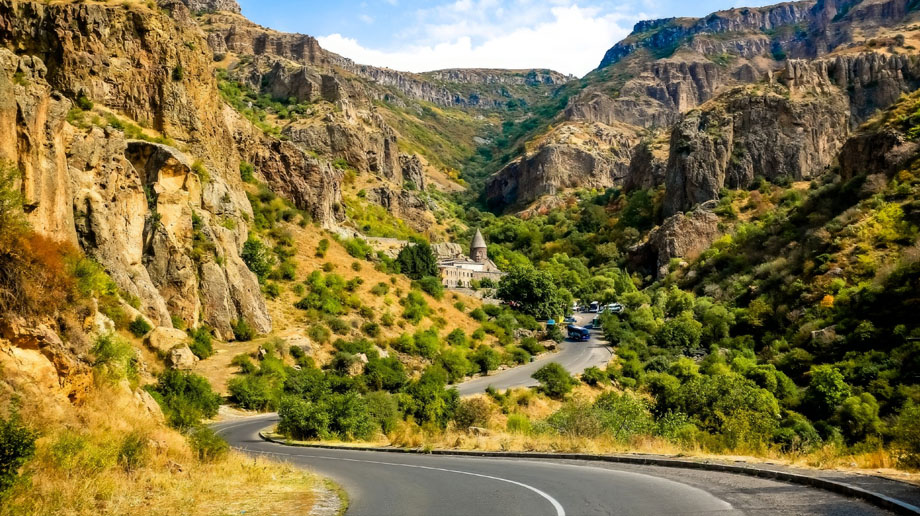
9. Yerevan - Garni and Geghard
Route description
The trip from Yerevan to Garni and Geghard is a fascinating journey through the cultural and historical sites of Armenia, which will be about 40 kilometers (25 miles) and will take about an hour. Starting from Yerevan, you will head east on the M4 highway, passing through suburban areas before reaching the picturesque landscapes of Kotayk province. The road is well paved and offers scenic views of the surrounding mountains and valleys.
Highlights
- Garni Temple: The first stop on your journey is Garni Temple, a stunning temple from the Hellenistic period dating back to the 1st century AD. Perched on a rocky cliff overlooking the Azat River Gorge, the Garni Temple is one of Armenia's most iconic landmarks. Explore the well-preserved temple with its Doric columns and intricate carvings, and enjoy panoramic views of the surrounding landscape.
- Geghard Monastery: Continuing your journey, visit Geghard Monastery, a UNESCO World Heritage Site known for its unique rock architecture and spiritual significance. The monastery complex is partially carved into the rocks of the Azat River Gorge and includes several chapels and cave dwellings. Tour the elaborately stone-carved chambers, chapels and cross stones and learn about the rich history and cultural heritage of the monastery.
- Azat River Gorge: The drive to Garni and Geghard passes through the picturesque Azat River Gorge with its high cliffs, lush vegetation and winding river. Stop at one of the viewpoints along the way to admire the stunning natural beauty of the gorge and capture the spectacular scenery in photos.
- Armenian Highlands: Travelling through Kotayk province, you can see the beauty of the Armenian Highlands with its rolling hills, rocky outcrops and terraced vineyards. As you travel through the picturesque countryside, take note of the local wildlife.
- Cultural Heritage: Garni and Geghard are not only architectural monuments, but also repositories of Armenia's rich cultural heritage. Learn about the ancient traditions and customs preserved in these historic sites, from pagan rituals and religious ceremonies to musical performances and handicrafts.
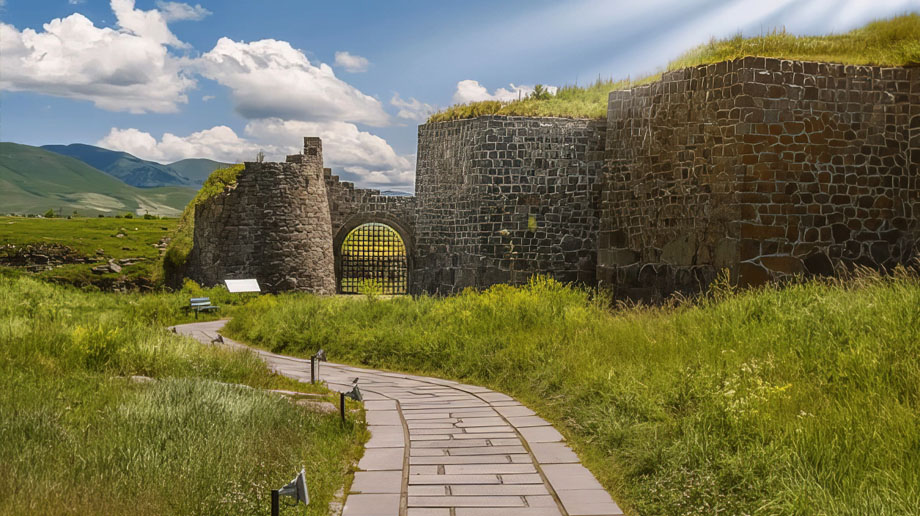
10. Stepanavan - Lori Berd
Route description
The drive from Stepanavan to Lori Berd passes through the picturesque landscapes of the Lori region in northern Armenia, covers about 45 kilometres (28 miles) and takes about one hour. Starting from Stepanavan, you will head northeast on the M6 highway, passing scenic valleys, wooded hillsides and several villages before reaching Lori Berd. The road is generally well maintained, although some sections can be narrow and winding as you climb up into the mountains.
Highlights
- Stepanavan: Begin your journey in Stepanavan, a charming town located at the foot of the Lesser Caucasus Mountains. Explore the town's historic streets, visit local markets and explore cultural attractions such as the Stepanavan Dendropark, a collection of diverse tree species from around the world. Don't miss the opportunity to sample traditional Armenian cuisine at one of the local restaurants.
- Magnificent Landscapes: Leaving Stepanavan, you will find yourself surrounded by the lush natural landscapes of the Lori region with its rolling hills, dense forests and winding rivers. Enjoy the natural beauty of the region as you drive through picturesque valleys and pastures dotted with wildflowers.
- Lori Bird Fortress: The highlight of the trip is Lori Bird Fortress, an ancient citadel perched on a rocky ledge overlooking the Debed River Gorge. Dating back to the 10th century, Lori Berd played a strategic role in the defence of the region against invaders and served as a key military stronghold for the Armenian rulers. Explore the ruins of the fortress, including its defensive walls, towers and underground chambers, and enjoy panoramic views of the surrounding area.
- Cultural Heritage: The province of Lori is rich in cultural heritage dating back thousands of years. Discover the ancient churches, monasteries and cross-stones scattered throughout the region, each telling a story of Armenia's religious and architectural heritage.
In conclusion, travelling Armenia's scenic roads by car reveals a wealth of natural landscapes, rich history and cultural heritage. For those looking for the freedom to travel at their own pace, renting a car from Swift Rent a Car is a convenient and reliable option. With a wide selection of cars and flexible rental options, travellers can easily navigate Armenia's roads and discover amazing sights along the way.
With its diverse landscapes, fascinating historical sites and warm hospitality, Armenia is a destination that promises to captivate the hearts and minds of all who embark on a journey along its winding roads.




